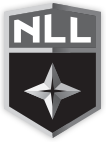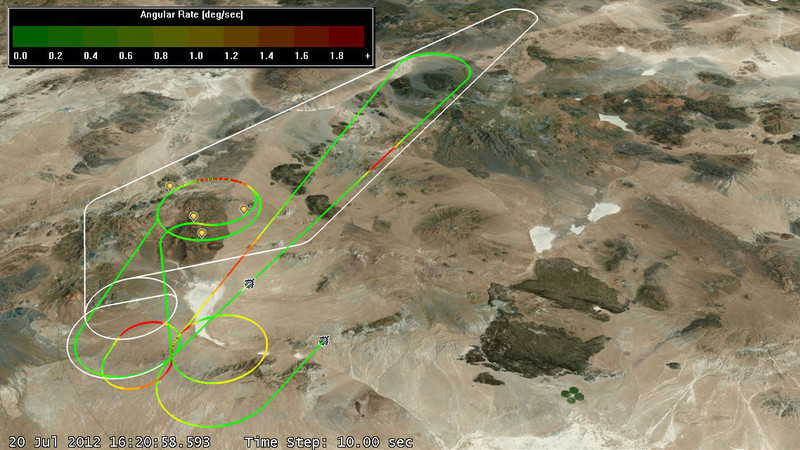
BOX LAX 101
The basics of a sport that's anything but.
OVERVIEW
Indoor lacrosse is played inside the confines of an ice hockey rink, with glass and rink boards intact. The playing surface consists of a green dieter turf carpet that is laid down over the hockey ice. The two teams combine to score a total of 25 goals on average during an NLL game.
Each team has five runners (forwards, transition players and defensemen) and a goaltender on the floor during the game. Each team dresses 18 players (16 runners and two goaltenders) per game, and the players rotate on and off the floor in shifts, similar to ice hockey. The game consists of four quarters, each fifteen minutes in length. A game that is tied at the end of regulation is decided in a sudden-death overtime. There are no tie games in professional indoor lacrosse.
NLL RULES
Rosters: 20-man roster, each team dresses 18 players for games (16 runners and two goalies). A team shall be composed of six (6) players on the floor, 5 runners and one goalie.
Time Format: Four 15-minute quarters; two minutes between quarters; 12 minute halftime.
Timeouts: Each team may take one 45-second timeout per half. A TV game has two timeouts per quarter.
Sudden Death Overtime: Games ending regulation play with a tie score are decided by a sudden death overtime period. Play continues until a goal is scored. More than one overtime period is played if necessary.
8-Second Violation: Occurs when team on offense fails to advance the ball past midfield within 8 seconds after taking possession at their end.
Face-Offs: To determine possessions at the start of each quarter and after every goal, two players face their sticks at midfield with a referee placing the ball between the heads of the sticks.
Shot Clock: A 30-second clock begins (counting down) when a team assumes possession of the ball. The offensive team must put a shot on goal during that time or they will lose possession. If they do shoot on goal (without scoring) and recover possession of the ball (via rebound/loose ball recovery), the clock is reset for a new 30 seconds.
TERMS OF THE TURF
Body Check: Used to slow an opponent who has the ball; must be above the waist and below the neck.
Breakaway: One-on-one (shooter on goalie) scoring opportunity.
Cradle: Method used to keep the ball inside the pocket of the stick by rocking it back and forth.
Crease: Only the goalie can stand in this nine-foot radius with the ball. Shooters or their teammates can not stand on (or inside) the line or their goals won't count. Any violation of this rule will disallow the goal.
Crosscheck: An defensive strategy using the shaft of the stick to push on an opponent to force a missed or bad shot.
Loose Ball: Occurs when there is no possession and the ball is bouncing, rolling, or rebounding off the boards or goaltender.
Major Penalty: Five minutes in the penalty box for infractions such as high sticking, boarding, face masking, fighting and spearing.
Man Down: When a team has one less player on the floor than their opponent.
Minor Penalty: Two minute penalty for infractions such as delay of game, elbowing, holding, illegal crosschecking, slashing, and tripping, for example.
Offensive Pick: The legal interference by an offensive player from a set position on a defensive player who is trying to defend the ball carrier.
Outlet Pass: The first pass from the goaltender or defender that begins the transition from defense to offense.
Penalty Box: Where a player goes to sit while serving a two and/or five minute penalty.
Power Play: When a team has an extra man advantage because the other team has at least one player in the penalty box
Screen Shot: When the goaltender can't see a shot because someone is in the way.
Shorthanded: When a team has one or more players in the penalty box and the opponent is at full-strength, or has more players on the floor.
Loss of Possession: Illegal screens, 30 second shot clock violation, 8 second half court violation, loose ball push, and illegal procedure during faceoffs are among the acts that can cause a team to lose possession of the ball.
PLAY OF THE GAME
Minor Penalties: On two minute personal fouls, the penalized player is released from the penalty box if a goal is scored before the expiration of the two minutes.
Major Penalties: On five minute major personal fouls, the penalized player stays in the box for the duration of the penalty, though the offending team returns to full strength if two goals are scored against them during the five minutes. When a second major penalty is imposed on the same player in a game, an automatic game misconduct penalty shall be imposed.
Use of Penalty Shot: Since a team cannot be more than two men down at a time, if a third penalty is called, the official will award a penalty shot to the non-offending team.
Ejection from Game: Players can be ejected from a game for several reasons including being the third man participating in a fight or accumulating two major penalties in one game.
Slow Whistle (Delayed Penalty): If a defending player commits a minor or major penalty against an opponent in possession of the ball, the 30-second shot clock expires, or a goal is scored or possession is gained by the non-offending team.
Coincidental Penalties: When each team is given the same amount of penalty time arising out of the same incident, the offending players shall not be released until the expiration of the penalty. Teams do not lose floor strength, and the ball is awarded to the team who was in possession prior to the fouls.
Field and Goals: Indoor lacrosse is played on a hockey rink covered by an artificial turf playing surface, which is usually referred to as the floor or the carpet (as opposed to the field). There must be boards around the sides of a minimum height of 3' high. Dimensions are 200' x 85' but may be altered.
Goals: are 4' (high) x 4'9" (wide). The circle around the goal known as the crease is 9'3" in diameter. An offensive player is not allowed to step into the crease area.










